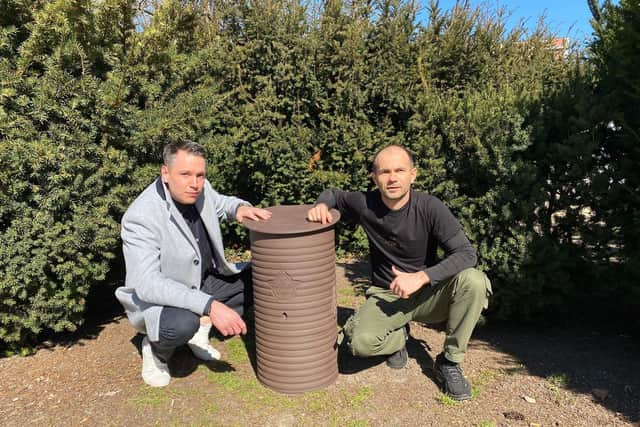Scottish conservationists create world's first 3D-printed hive to help save honey bees
A team from the Lacrima Foundation, an Edinburgh-based conservation charity, has created the world’s first ever 3D-printed wood log hive.
It’s hoped the invention will help reverse alarming global declines of honey bees, which perform crucial pollination services for much of the world’s food crops.
Advertisement
Hide AdAdvertisement
Hide AdThe cavity log hives are made out of a specially designed wood-based composite, which is fully biodegradable and allows the insects to live in an undisturbed ecosystem in synergy with their seasonal rhythms.
They can be installed in trees to emulate natural conditions for honey bees.
The team is working with local and international organisations, with support from the United Nations and Scottish Government.
Lacrima Foundation chair Vince Moucha said: “We decided to launch our own non-profit organisation, which recently applied for United Nations Special Consultative status, to provide scalable solutions and to address the subject of high global bee mortality rate by improving honey bee health.


“Even though there are other people and organisations working in the field of natural beekeeping, the impact, progress and scope of these projects is minimal and slow, due to limited access to resources and clear vision.
“I am driven by responsibility and decided to act on it due to the urgency and importance of this matter.”
Honey bee populations are in decline worldwide.
Experts blame a range of factors – loss of habitat due to the increasing spread of farming and other human activities, parasites and diseases and the impact of toxic pesticides.


The UK’s first sanctuary for native honey bees – Apis melifera melifera, or European dark bee – was established in Scotland in 2013, when ministers granted a special designation banning other species from being kept on the islands of Colonsay and Oronsay.
Advertisement
Hide AdAdvertisement
Hide AdThe rare pure-bred population is protected through its isolation from the mainland.
The honey bee is one of only a few ‘domesticated’ insects, with evidence of apiculture dating back nearly 10,000 years.
The Lacrima Foundation will continue to work with beekeepers across the UK, Europe and the US.
Comments
Want to join the conversation? Please or to comment on this article.
